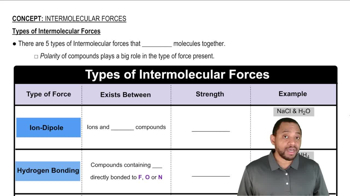Here are the essential concepts you must grasp in order to answer the question correctly.
Greenhouse Gases
Greenhouse gases, such as carbon dioxide (CO2) and methane (CH4), trap heat in the Earth's atmosphere, contributing to the greenhouse effect. This effect is essential for maintaining the planet's temperature but can lead to global warming when concentrations of these gases increase significantly. Understanding the roles and impacts of different greenhouse gases is crucial for evaluating their contributions to climate change.
Recommended video:
Radiative Forcing
Radiative forcing is a measure of how much a given factor, such as a greenhouse gas, affects the energy balance of the Earth’s atmosphere. It quantifies the change in energy flux caused by greenhouse gases, expressed in watts per square meter (W/m²). By comparing the radiative forcing values of CO2 and CH4, one can assess their relative contributions to the greenhouse effect and climate change.
Recommended video:
Types of Intermolecular Forces
Comparative Analysis
Comparative analysis involves evaluating two or more items to determine their differences and similarities. In the context of greenhouse gases, this means comparing their radiative forcing values to understand which gas has a greater impact on the greenhouse effect. This analysis is essential for developing effective climate policies and strategies to mitigate global warming.
Recommended video:




